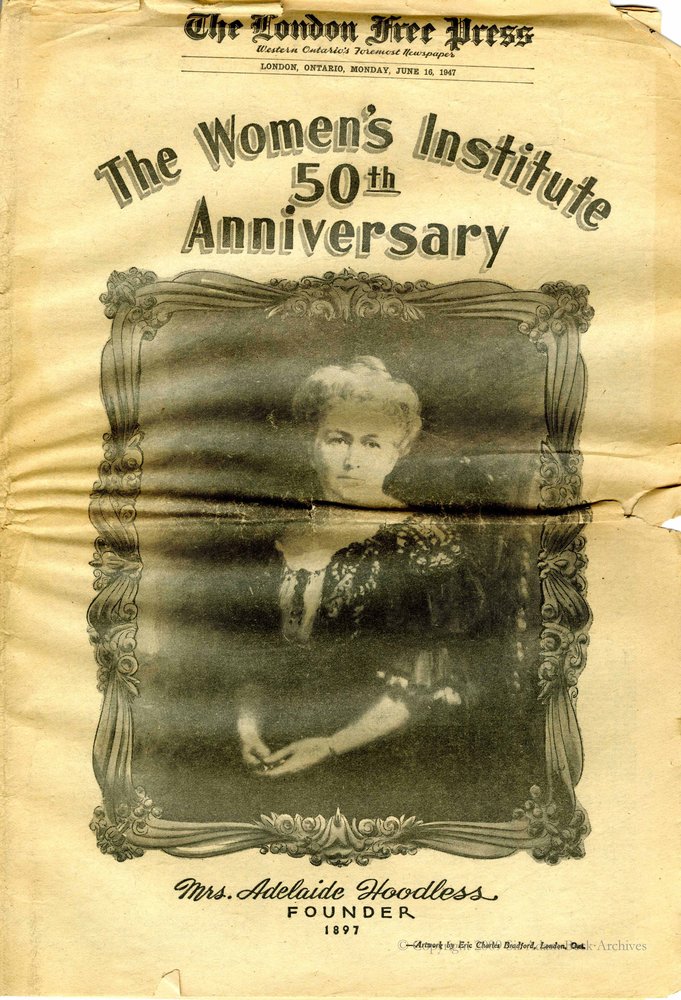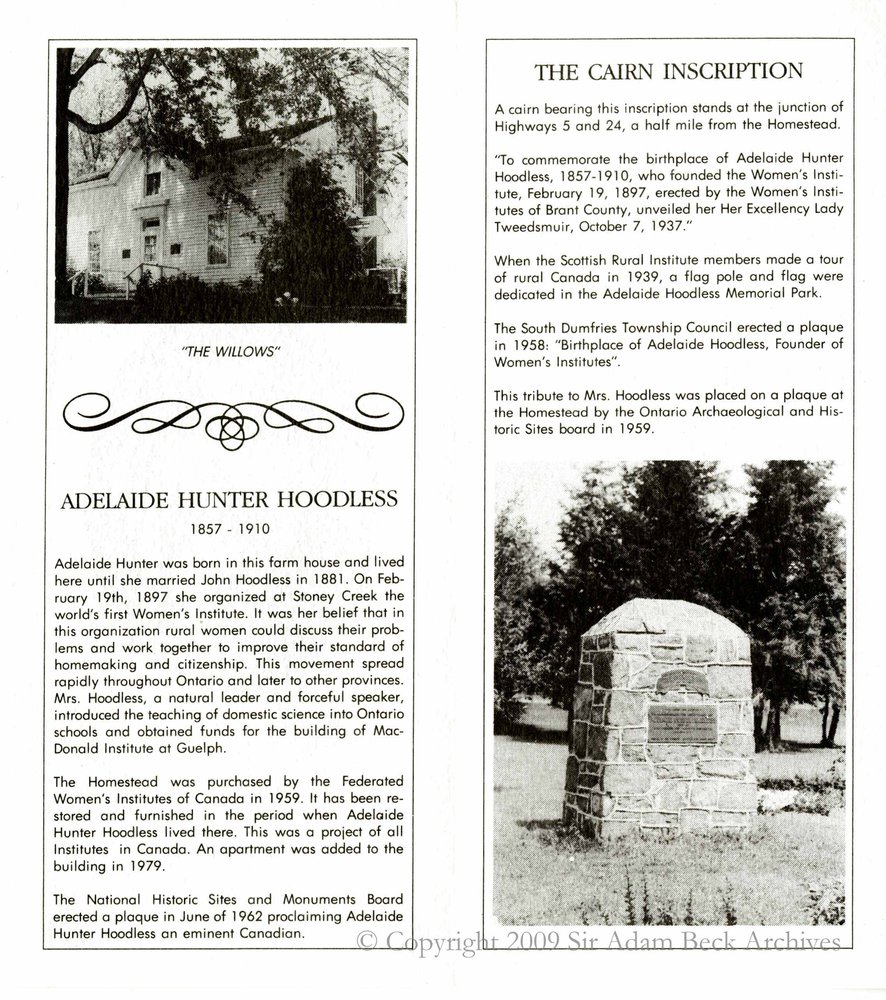
By: Corey Everrett
Women’s Institutes (W.I.) can be found throughout the world, with the common goal of educating and empowering women, and serving their local communities. Adelaide Hunter Hoodless is considered the founder of the first Women’s Institute; through her work creating W.I’s and her tireless promotion of the education of women, she created a lasting legacy in the women’s rights movement, and her influence can still be felt today.
Adelaide Hunter Hoodless was born outside of the village of St. George, Ontario and lived on a farm with her twelve siblings. Adelaide’s family was very cultured and intellectual, which led to all of her brothers becoming university educated. It was after Adelaide had married and began a family with John Hoodless in Hamilton that Adelaide realized how important it was to properly educate women as well. Adelaide and John suffered the great tragedy of losing their 18 month son, who died after drinking non-pasteurized milk. This horrific event made her realize that she had not been properly educated about the science involved in caring for ones’ family and home. Adelaide immediately used the loss of her son to promote educating women and better preparing them to care for their families. She urged farmers to drink “pure milk” and developed the motto that “you purify society when you purify the home”.
Adelaide led numerous women’s rights movements, including implementing the teaching of domestic science in Ontario Public Schools, opening a permanent home economics school and a women’s department in the Ontario Agricultural Society in Guelph, and was the President of Hamilton’s Young Women’s Christian Association. Nevertheless, Adelaide Hunter Hoodless is most well known as the founder of the first Women’s Institute (W.I.) in Stoney Creek, Ontario on February 19th, 1897. This group had the same objective of educating rural women about the science involved in domestic duties, but also expanded its mission to include personal and communal growth. Women’s Institutes still thrive today and can be found in over thirty countries around the world.




